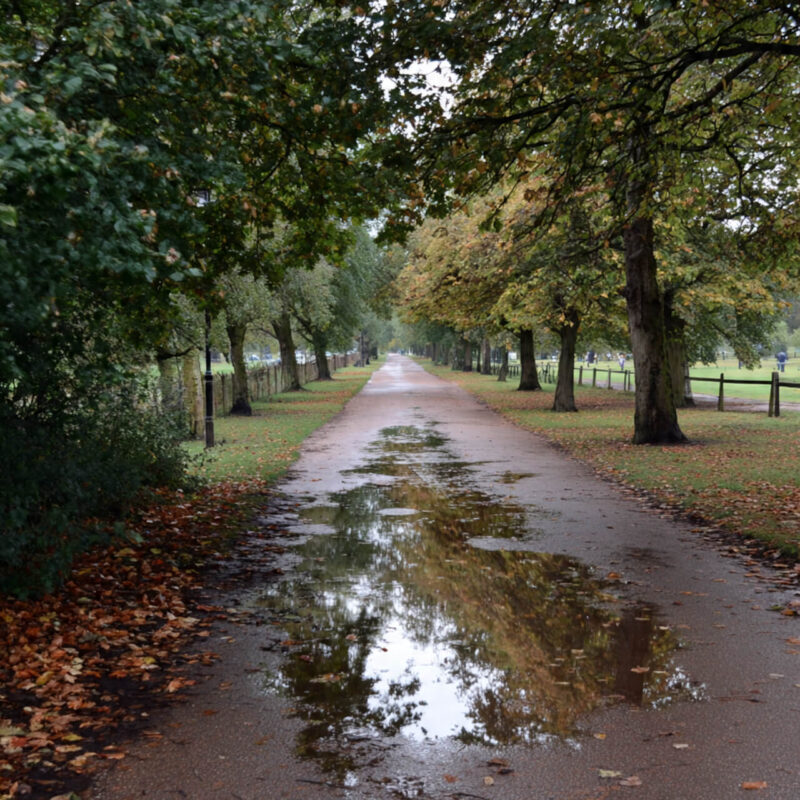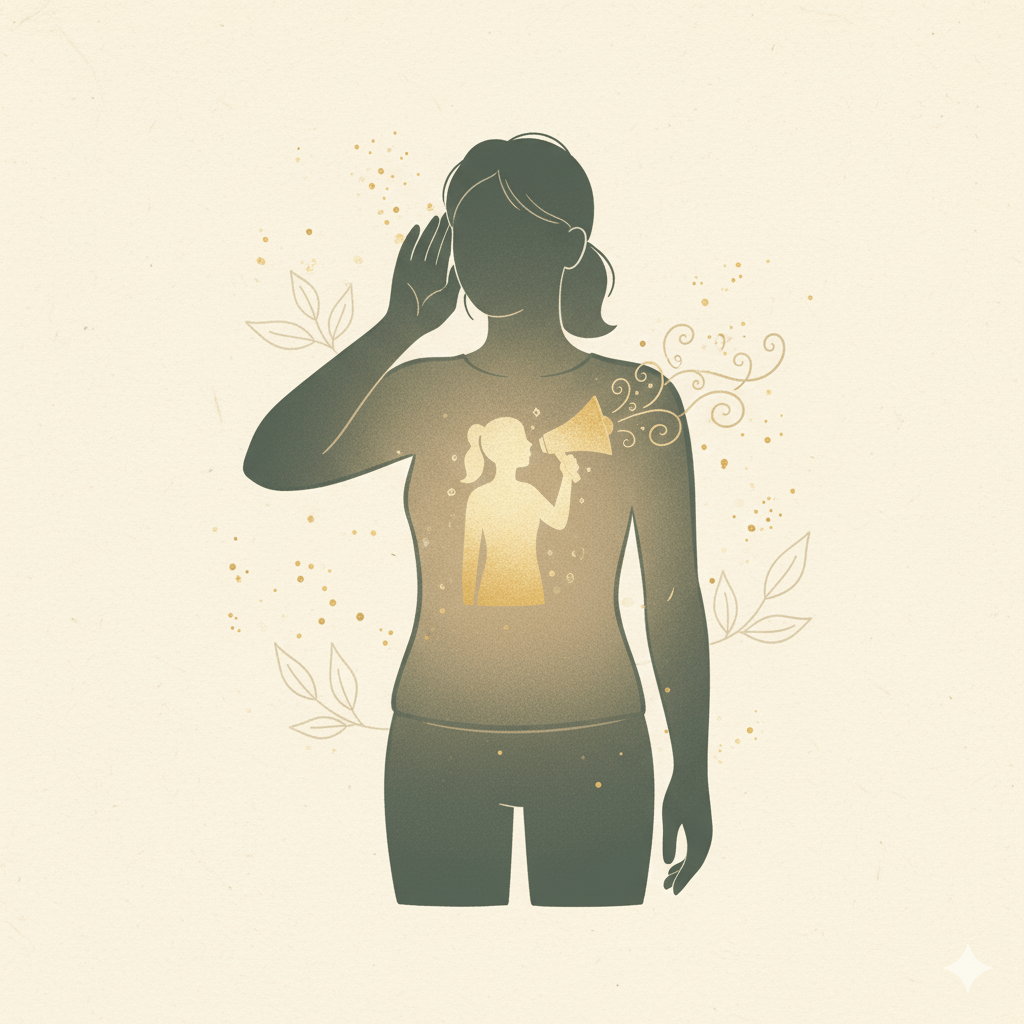Read time: 10 minutes
Quick Summary: Mindfulness for beginners who can’t meditate with racing minds. Try these 10+ simple techniques that take 1 minute or less, no apps, cushions, or perfection required. Start with one conscious breath.
Mindfulness for Beginners: You’re Not Broken, You Were Just Taught Wrong
Mindfulness for beginners often starts with a frustrating paradox: you download the meditation app everyone swears changed their life, sit down, press play, close your eyes — and immediately, your brain explodes.
“Just observe your thoughts without judgment,” the calm voice says.
Did I respond to that email? What’s for dinner? Why am I so bad at this?
You open your eyes three minutes in, feeling more anxious than when you started.
You delete the app. Add it to the list of things that work for everyone else but not for you.
Maybe your mind won’t stop because of work stress or you’re replaying what you said to your partner last night. Maybe it’s grief that won’t let you rest or you woke at 3am and your brain refuses to shut off.
Here’s what nobody tells you: around 8 percent of people feel worse when they first try meditation, and only about 5 percent stick with meditation apps beyond a month — not because mindfulness doesn’t work, but because most of us were taught the wrong starting point.

The Right Entry Point for Racing Minds
This guide shows you 10+ simple mindfulness techniques that work when your mind won’t stop, backed by research and tested by someone who once thought meditation was for hippies. This is mindfulness for beginners who need practical, no-nonsense approaches. No 20-minute sessions, no meditation cushions and definitely no perfection needed.
About a year ago, I couldn’t sit still for two minutes without my brain going mental.
It was 7:15am on a Wednesday. I’d set my phone timer for just two minutes—surely I could manage two minutes. I sat cross-legged on my bedroom floor, the carpet rough under my ankles. Eyes closed. The meditation app’s calm voice said “simply observe your breath.”
Twenty seconds in, my left foot started tingling. Did I lock the front door? Thirty seconds. That email from Sarah—did I sound rude? I shifted my weight. The tingling got worse. How much time is left? I opened one eye. One minute, forty-seven seconds remaining.
I gave up, grabbed my phone, and felt like a failure before breakfast.
Now? I actually look forward to those quiet moments. Not because I became some zen master, but because I finally learned the right entry point.
Disclaimer: I’m a coach and wellness educator sharing what’s worked through lived experience and research. I’m not a therapist or medical professional. If you’re struggling with anxiety or low mood, please reach out to a qualified professional.
UK readers: Access free, evidence-based mindfulness audio guides through the NHS website.
Table of Contents
- Why Traditional Meditation Fails for Anxious Minds
- What Mindfulness Really Means (Without the Spiritual Stuff)
- The Science of Mindful Focus
- Mindfulness for Beginners: Exercises You Can Do in Under 1 Minute
- Best Mindfulness Techniques for Beginners with Racing Thoughts
- How Beginners Can Practise Mindfulness Without Sitting Still
- Mindfulness for Beginners: When Your Mind Won't Let You Sleep
- Common Mindfulness Mistakes for Beginners (and Gentle Fixes)
- 3 Actions You Can Take Today
- Everyday Mastery Steps You Can Take Now
- Frequently Asked Questions
- Final Reflection: Permission to Start Messy
Why Traditional Meditation Fails for Anxious Minds
You’re told to sit quietly for twenty minutes and “empty your mind.” For an over-stressed brain, that’s like asking someone who’s never run to do a marathon. That’s why mindfulness for beginners needs a different approach.
What actually happens:
- Your racing thoughts get louder
- You judge yourself for “failing”
- You quit and assume mindfulness isn’t for you
The truth? You don’t need more time what you need is a smaller entry point.
Start with one mindful breath. That’s it.
If you ever catch yourself waiting for the “perfect moment” to start, you’ll love this companion read: How to Start Any Habit When You Don’t Feel Ready — it shows how progress begins long before motivation does.

What Mindfulness Really Means (Without the Spiritual Stuff)
When someone used to say “meditation” to me, I’d picture a hippy or Buddha sitting somewhere humming.
That just wasn’t me.
I’m not sitting cross-legged on a cushion chanting “Om.” I’m not burning incense or talking about chakras. And I don’t need to be.
What I learned changed everything: mindfulness has a thousand faces.
Finding Your Own Practice
Yes, you can meditate. You can chant. There’s yoga and guided meditation. But here’s what matters more than any of that:
Find what works for you, not what looks spiritual on Instagram.
It could be:
- Listening to guided sleep meditations as you’re nodding off (god, that works wonders to turn off that bloody mind chatter just as you’re trying to sleep)
- Simple breathing exercises — three breaths, that’s it
- Nature sounds or monk chants playing while you work
- Walking and just listening to the birds, feeling the path under your feet
- Sitting in silence for 30 seconds before opening your laptop
It’s a minefield out there. There’s something for everyone. You just need to find what fits you.
The goal? Just to be.
Just to be present, right in a moment, just still.
The Transformation: Before and After
One year into this practice, the difference is visceral.
Now: I roll into bed at 10:30pm. Close my eyes. And there’s just… silence. The kind of quiet I didn’t know was possible. My shoulders drop. My jaw unclenches. Sleep finds me within minutes.
Two years ago? I’d lie there at 11pm with my heart hammering, replaying that thing I said to my colleague, planning tomorrow’s emails, mentally rehearsing conversations that might never happen. At 1am I’d be googling “why can’t I sleep.” I’d drift off around 4am and wake at 7am feeling like I’d been dragged through gravel.
My bedside table had three different sleep aids. My phone history was full of 3am anxiety spirals. And I’d convinced myself this was just… life after 30.
It’s not easy. It takes practice. Especially at the beginning when your mind hasn’t learned it’s allowed to be quiet.
But it’s worth it.
It was like waking up from some sort of trance for me.
The Simple Definition
Mindfulness is simply: awareness + non-judgement + presence in the present moment.
Mindfulness isn’t about stopping thoughts; it’s about noticing them without trying to fix them.

Mindfulness vs Meditation: What’s the Difference?
People confuse these terms constantly. Here’s the clarity:
Meditation = a formal practice (sit, close eyes, follow your breath for a set time)
Mindfulness = awareness anywhere (how you drink tea, walk, or listen)
You can be mindful without ever meditating. Meditation is the gym session; mindfulness is being active throughout your day.
Think of meditation as structured training. Mindfulness is the skill you’re training for—and you can use it anywhere, anytime.
The Science of Mindful Focus
Here’s why mindfulness techniques actually work for anxiety management and stress relief:
Harvard research (2023) found even two minutes of mindful breathing can lower cortisol levels. (Harvard Gazette)
Repeated practice strengthens your “rest-and-digest” response, activating your parasympathetic nervous system.
MRI studies show growth in areas linked to emotional regulation and less activity in the amygdala (your anxiety center).
You’re not chasing instant calm — you’re training your nervous system to remember what calm feels like.
Mindfulness for Beginners: Exercises You Can Do in Under 1 Minute
The One-Minute Pause
Before your phone, before coffee, before work: inhale four counts, exhale six.
Anchor it to:
- The kettle boiling
- The red light
- Your first sip of tea
This trains your nervous system that mornings can be calm, not chaotic.
The 5-4-3-2-1 Grounding Method for Beginners
When anxiety spikes and you need immediate stress relief:
- Name 5 things you can see
- 4 things you can touch
- 3 things you can hear
- 2 things you can smell
- 1 thing you can taste
This pulls you from future-thinking into present awareness.
Breath Awareness (Without Forcing Anything)
You don’t need to control your breath. Just notice it.
Where do you feel it?
- Nostrils?
- Chest?
- Belly?
That’s it. 30 seconds of noticing = mindfulness.
The Hand Scan
Sitting in a meeting? Waiting for the bus?
Feel your hands. Notice:
- Temperature
- Tingling
- Weight
- Texture against your lap
This is mindfulness for beginners without meditation — awareness in the mundane.
Best Mindfulness Techniques for Beginners with Racing Thoughts
Thought Watching (Not Thought Stopping)
Imagine your thoughts as cars on a distant motorway.
Don’t chase them. Don’t judge them. Just watch them pass.
“There’s the work worry., then there’s tomorrow’s to-do list and that embarrassing thing I said in 2009.”
They pass. You stay still.

The Noting Technique
This is a powerful mindfulness for beginners tool. When a thought appears, quietly label it:
- “Planning”
- “Worrying”
- “Remembering”
This creates distance. You’re not your thoughts — you’re the one noticing them.
Body Scan for Beginners with Anxious Minds
Three weeks into trying mindfulness, I had a breakdown.
It was a Sunday afternoon. I’d committed to a 10-minute body scan—everyone said it was “so relaxing.” I lay on my bedroom floor, pressed play on the guided meditation, and closed my eyes.
“Notice your toes…”
My toes felt fine. Normal.
“Now your feet… your ankles…”
My chest started tightening.
“Your legs… your stomach…”
Suddenly I couldn’t breathe properly. Not like I was suffocating, but like I’d forgotten how. My heart started racing. I sat bolt upright, ripped my earbuds out, and felt tears running down my face.
I wasn’t crying about the body scan it was because even this, this mindfulness thing that was supposed to help well it felt impossible. Even the “easy” practices felt hard. I texted my friend: “I can’t even lie still for 10 minutes without falling apart. What’s wrong with me?”
Her reply changed everything: “Nothing’s wrong with you. You’ve just been running on anxiety for so long that stillness feels dangerous. Start with 30 seconds. Build up slowly.”
So I did.
Here’s the gentler version that actually worked:
Start at your toes. Notice without changing anything.
Move slowly up: feet, legs, stomach, chest, arms, neck, face.
If anxiety spikes, open your eyes. There’s no prize for finishing.
This works especially well at 3am when sleep won’t come.
The “Just This” Practice
Racing thoughts love future-tripping and past-dwelling.
Bring them back with: “Just this breath. Just this step. Just this moment.”
Simple. Repeatable. Effective.
How Beginners Can Practise Mindfulness Without Sitting Still
Mindful Walking for Beginners
You don’t need a nature trail. Your hallway works.
Feel:
- Heel striking ground
- Weight shifting
- Air on your face
Pro tip: Leave your phone behind for 5 minutes.

Washing Dishes as Meditation
Yes, really.
Feel the water temperature. Notice the soap bubbles. Hear the clink of plates.
This isn’t chore avoidance — it’s mindfulness training disguised as housework.
Mindful Eating for Beginners
Take one bite of your next meal and actually taste it.
Notice:
- Texture
- Temperature
- Flavour changes
Most of us inhale food while scrolling. One mindful bite = progress.
The Commute Practice
Instead of scrolling:
- Feel your feet on the floor (bus/train)
- Notice your hands on the wheel (car)
- Hear the sounds around you
Your commute becomes practice time, not dead time.
This is mindfulness for beginners at its most practical — using time you already have.
Mindfulness for Beginners: When Your Mind Won’t Let You Sleep
The 3am Spiral (And How to Stop It)
Last winter, I spent eight weeks waking at 3am like clockwork.
The first time, I thought it was a one-off. Drank some water, went back to sleep. The second night, same thing. By week two, I was lying awake at 2:45am waiting for 3am to arrive, which of course made it arrive faster.
Week three, I started panicking about the panic. What if this never stops? What if I’m broken?
One particular night stands out. It was 3:17am. I was lying in the dark, and my brain decided this was the perfect time to replay every awkward conversation I’d had that month, remind me of upcoming bills, and helpfully suggest that maybe that headache I had last Tuesday was actually something serious.
My partner was sleeping peacefully beside me. I resented him for it.
I got up, went to the kitchen, and sat on the cold tile floor in the dark. Not because I wanted to be there, but because lying in bed pretending to sleep felt worse.
That’s when I remembered the 4-7-8 breathing I’d read about but never tried because “breathing exercises don’t work for people like me.”
I tried it anyway. Because what else was I going to do at 3:17am on a Tuesday?
Within four rounds, something shifted. Not fixed. Not “cured.” Just… shifted.
By week five, the 3am waking still happened, but I’d stopped fighting it. And weirdly, that’s when it started happening less.

Guided Sleep Meditations
When your mind won’t shut up, let someone else’s voice take over.
Apps like Calm, Headspace, or free NHS resources work because they occupy your problem-solving brain with someone else’s words.
You don’t have to stay awake to finish them. That’s the point.
Progressive Muscle Relaxation
Tense each muscle group for 5 seconds, then release:
- Toes
- Calves
- Thighs
- Stomach
- Shoulders
- Face
Most people fall asleep before finishing. That’s success, not failure.
The 4-7-8 Breathing Technique
Inhale for 4, hold for 7, exhale for 8.
Repeat 4 times.
The extended exhale signals safety to your nervous system. You’re not running from danger — you’re ready to rest.
Common Mindfulness Mistakes for Beginners (and Gentle Fixes)
Mistake #1: Trying to “Empty Your Mind”
You can’t. And you don’t need to.
Fix: Notice thoughts without engaging. They’re clouds passing, not commands to obey.
Mistake #2: Only Practising When Calm
Mindfulness isn’t just for peaceful moments — it’s training for chaos.
Fix: Practise 30 seconds during stress. That’s when it matters most.
Mistake #3: Judging Yourself for “Doing It Wrong”
If you noticed your mind wandered, that’s the practice. Noticing is the win.
Fix: Every time you catch yourself and return = one successful rep.
Mistake #4: Waiting for Motivation
Motivation follows action, not the other way around. This is crucial for mindfulness for beginners to understand.
Fix: Do one breath before you feel ready. Then another. Then another.

Mr Critic Moment:
“This is just trendy nonsense. People survived for thousands of years without ‘mindfulness.’ You’re just weak for needing it.”
Reality: People survived without antibiotics too. Doesn’t mean we should skip them.
Mindfulness for beginners isn’t weakness — it’s maintenance. Like brushing your teeth, but for your nervous system.
Ancestors didn’t need it because they weren’t checking 127 emails a day, doom-scrolling at midnight, or juggling the mental load of modern life.
You’re not weak. You’re adapting to a world that’s overwhelming by design.
Here’s how to handle your inner critic during mindfulness for beginners practice:
Mr Critic: “You’ve been breathing for two minutes and you’re still thinking about work. You’re terrible at this.”
You: “Thanks for noticing. That’s a thought. Back to breathing.”
Mr Critic: “Everyone else finds this easy. You’re the only one struggling.”
You: “That’s another thought. Breathing.”
Mr Critic: “Brilliant, another thing you’re doing wrong. Shall I start a list?”
You: “Thanks for the feedback. I’m noticing that thought — and breathing anyway.”
That’s the work: seeing the commentary without handing it the microphone.
Not everyone experiences an inner critic as a voice. Some feel it as tension in the chest, heaviness, or a wave of doubt instead. However it shows up for you — noticing it is still mindfulness
If your inner voice ever turns cruel, Mind UK has free, confidential ways to get help and perspective.
3 Actions You Can Take Today
Action 1: Take three conscious breaths right now. Notice them. That’s it.
Action 2: Pick one daily trigger (kettle boiling, red light, opening your laptop) and pair it with one breath.
Action 3: Set a phone reminder for 8pm tonight: “How was my day?” Spend 30 seconds noticing, not judging.
Everyday Mastery Steps You Can Take Now
Week 1: Anchor One Breath to One Moment
This is the foundation of mindfulness for beginners. Every time you:
- Sit down at your desk
- Wait for the kettle
- Stop at a red light
→ Take ONE conscious breath.
That’s it. No app. No timer. Just one breath.
Week 2: Expand to Three Breaths
Same triggers, but now: inhale four counts, exhale six counts, repeat three times.
You’re not adding time to your day. You’re adding awareness to moments that already exist. This is how mindfulness for beginners becomes sustainable.
Week 3: Add One Minute of Morning Stillness
Before checking your phone:
Sit. Breathe. Notice how your body feels.
One minute. That’s all.
Week 4: Try Guided Meditation for Beginners (5 Minutes)
Before bed: Try one guided sleep meditation from Calm, Headspace, or the NHS website.
If it doesn’t work, that’s data, not failure. Try a different voice, different length, different style.

Journaling Prompts:
What does my mind do when I try to be still? (Describe without judgment)
What am I avoiding by staying busy? What would happen if I paused?
How does my body feel right now? (Scan from head to toe)
What story am I telling myself about why mindfulness won’t work for me?
Frequently Asked Questions
What if my mind races more when I try mindfulness?
This is incredibly common.
This happens to 8% of beginners. When you finally pause after years of keeping your mind busy, suppressed stress surfaces. Your mind isn’t broken—it’s finally being heard. This is one of the most common challenges in mindfulness for beginners.
Think of it like this: your mind has been running constantly, scanning for threats, solving problems, planning ahead. The moment you try to “quiet” it, you suddenly become aware of just how loud it’s always been. You’re not creating the noise—you’re just noticing it for the first time.
What to do: Start with movement-based mindfulness techniques (walking, washing dishes) before attempting sitting meditation. Your mind needs to learn that stillness is safe.
How long should beginners practise mindfulness?
Start with 1 minute, not 20.
Research from Harvard shows that even 2 minutes of mindful breathing reduces cortisol levels within days. Consistency matters infinitely more than duration.
Most people quit because they try to jump straight to 20-minute sessions. That’s like running a marathon when you’ve never jogged before.
Try this progression: week by week
- One breath before checking your phone (3 times daily)
- Three breaths before major transitions (starting work, leaving house)
- One minute of breath awareness when you wake up
- Month 2: Five minutes of guided meditation before bed
Let your practice grow naturally. Don’t force it.
Can beginners practise mindfulness without traditional meditation?
Absolutely. This is mindfulness for beginners without meditation, and it’s perfect for people with racing thoughts or anxiety.
Try these alternatives:
- The 5-4-3-2-1 grounding method (notice 5 things you see, 4 you touch, 3 you hear, 2 you smell, 1 you taste)
- Mindful walking while feeling each footstep
- Guided sleep meditations (apps like Calm, Headspace, or NHS resources)
- Paying full attention while washing dishes, folding laundry, or making tea
- Mindful eating — actually tasting your food
Meditation is one form of mindfulness, but not the only way. You can be mindful while doing literally anything.
What’s the difference between mindfulness and meditation?
Meditation is a formal practice—sitting down, closing your eyes, following your breath or a guided audio for a set time.
Mindfulness is awareness in any moment. It’s the quality of attention you bring to whatever you’re doing right now.
You can meditate without being mindful (sitting there planning your day). You can be mindful without meditating (washing dishes with full attention).
Think of meditation as the gym session. Mindfulness is being active throughout your day. Both are valuable. Neither requires the other.
What if meditation makes my anxiety worse?
If meditation makes you anxious, you’re not alone—and you’re not doing it wrong.
What’s happening: People with GAD, trauma histories, or chronic anxiety sometimes find that sitting still with their thoughts triggers their stress response rather than calming it. This is called “relaxation-induced anxiety,” and it’s a real phenomenon.
Why it happens: Your nervous system has been on high alert for so long that stillness feels dangerous. Slowing down can feel like you’re losing control, which spikes anxiety.
What to do instead:
- Try grounding techniques first (5-4-3-2-1 method)
- Keep your eyes open during breath awareness
- Start with movement-based mindfulness (walking, gentle stretching)
- Use guided meditations so you’re not alone with your thoughts
- Shorter sessions (30 seconds, not 20 minutes)
For UK readers: If meditation consistently makes things worse, speak with your GP about NHS-approved mindfulness programs specifically designed for anxiety disorders. The NHS offers specialized mindfulness-based cognitive therapy (MBCT) that’s structured for people with chronic anxiety.
What do I do when I wake at 3am with racing thoughts?
This is one of the most common—and most frustrating—experiences with mindfulness for beginners.
First, accept you’re awake. Fighting wakefulness creates cortisol, which keeps you awake longer. Instead, think: “I’m awake right now. That’s okay. Sleep will come.”
Then try one of these:
- The Body Scan – Starting at your toes, slowly notice each part of your body. Most people fall asleep before finishing.
- 4-7-8 Breathing – In for 4, hold for 7, out for 8. Repeat 4 times. The extended exhale signals safety to your nervous system.
- Guided Sleep Meditation – Put on a sleep story or guided meditation. Let someone else’s voice occupy your problem-solving brain. UK options: Calm, Headspace, or free NHS-approved apps.
- Thought Watching – Imagine thoughts as cars on a distant road. Watch them pass without chasing them. “There’s the work worry. There’s tomorrow’s to-do list.” They pass. You stay still.
What NOT to do:
- Check your phone (blue light delays sleep)
- Start planning or problem-solving (trains your brain to be alert at 3am)
- Force yourself to relax (creates more tension)
The goal isn’t to force sleep. It’s to create conditions where sleep feels safe to return.
For UK readers dealing with winter insomnia and dark mornings, this is incredibly common from October through March. You’re not alone, and yes, it gets better with practice.
How do beginners practise mindfulness when they’re too busy?
This is what 26% of people say stops them from starting. But here’s the truth for mindfulness for beginners: you don’t need more time—you need different timing.
Mindfulness for busy minds looks like:
- One breath before opening your laptop (5 seconds)
- Noticing your feet on the floor while the kettle boils (30 seconds)
- Three breaths at a red light (15 seconds)
- Feeling the water temperature while washing your hands (10 seconds)
You’re not adding 20 minutes to your day. You’re adding awareness to moments that already exist.
The question isn’t “when will I find time?” It’s “which existing moment can I bring attention to?”

Final Reflection: Permission to Start Messy
You don’t need perfect silence or a retreat to be mindful.
You need one pause, one breath, one choice to be here now.
Mindfulness for beginners isn’t about perfection. Mindfulness isn’t escape — it’s arrival. The art of showing up for your own life — even the mundane bits, even the hard bits, even the beautiful bits you almost missed because you were busy planning what’s next.
You have two choices right now.
Choice 1: Close this tab. Tell yourself you’ll start when you have more time. When things calm down. When you feel ready. Watch “when I’m ready” become next month, then next year, then never. Watch it become the same story you told yourself last January, and the January before that.
Choice 2: Take one breath right now. Before you click away. Four counts in. Six counts out.
That’s it. That’s your start.
Mindfulness doesn’t ask for motivation or a perfect morning routine.
It just asks you to pause.
Which are you choosing?
This is your permission slip to start messy. We don’t chase perfect here — we practise progress.
If you’d like to build on this practice, explore the guides linked throughout — they weave mindfulness, Stoic calm, and realistic habits into one simple system for everyday life.
Your Next Steps:
Once you’ve started your mindfulness practice, you might want to explore these related guides:
- Want to make mindfulness automatic? Learn how to build habits that stick without relying on motivation
- Combine mindfulness with ancient wisdom by discovering how to practise Stoic reflection for real-world calm
- Struggling with dark UK winters? Here’s how to beat winter blues with seasonal strategies
Stay Connected
Join the Everyday Mastery Newsletter: everydaymastery.co.uk/newsletter
Support the writing: Buy me a coffee — it keeps the kettle (and the ideas) warm.
Kel is the writer behind Everyday Mastery, where she shares the real, messy, and meaningful process of building habits, resilience, and self-belief from the ground up. Her writing blends ancient philosophy with modern science, always focused on small, practical steps that lead to lasting





